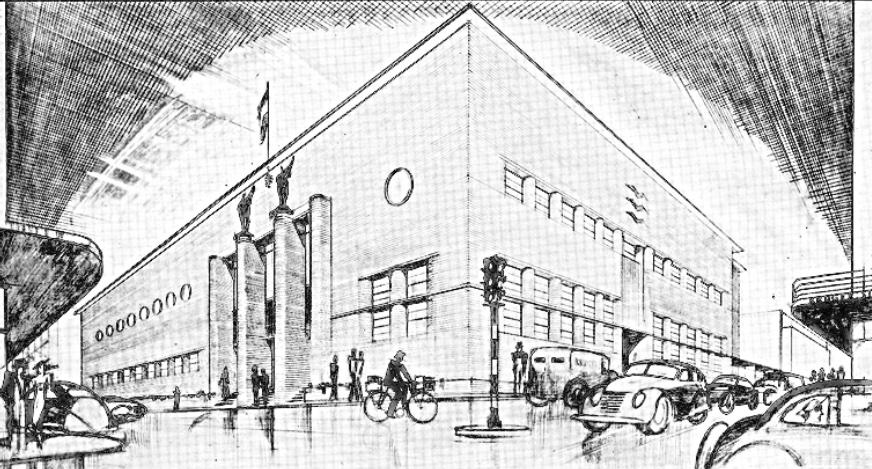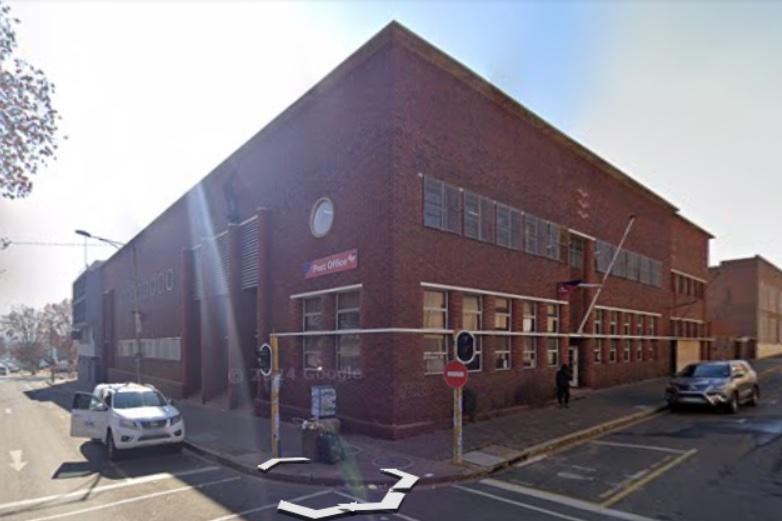
Disclaimer: Any views expressed by individuals and organisations are their own and do not in any way represent the views of The Heritage Portal. If you find any mistakes or historical inaccuracies, please contact the editor.
The site selected for the post office occupies a corner plot fronting both Kruger and Ockerse Streets, just off Commissioner Street, the main thoroughfare through Krugersdorp. Originally, this site formed part of a block of stands reserved by the ZAR Government for official use. (An exception was made for the corner of Commissioner and Kruger Streets, which was allocated to Mr. Abner Cohen for his Monument Hotel, later known as the Majestic Hotel.) Before the construction of the post office, the precise site served as the Pass Office under the ZAR administration.
To maximize the potential of the plot, the architects opted for an L-shaped layout: the southern wing housed public spaces and circulation offices, while the western wing contained staff facilities and, above, a switch-room.
The main entrance, originally from the private box and posting lobby facing Kruger Street, is of generous proportions. Sadly, this entrance is no longer in use, and the once grand main façade is now neglected.
The Post Office via Street View
The principal public hall—reserved at the time for Europeans—measured 20 by 6 metres and had a secondary entrance on Ockerse Street, which serves today as the building’s main access point. Adjacent to it was a smaller, nearly square room of 5.5 by 6 metres, designated for non-Europeans. This section was accessed through an atrium off Ockerse Street. (Today, the two spaces have been combined into a single large hall.)
Both public halls were acoustically treated and originally paved with wooden blocks. The Kruger Street wing included rooms for the Postmaster, accounts and general offices, male and female staff rooms, a records room, cable vault and duct, and a staff entrance and stairwell leading from the postal yard.
The first floor was entirely dedicated to the engineering section, lit from the west by double bull’s-eye windows and from the east by glass bricks.
Architecturally, the building is clad in face brick, with white-painted concrete cornices and fins at window-head height. On the Kruger Street elevation, fins at cill level help square the building against the steeply sloping street.
Businesses were proud to be associated with the building
The main entrance is framed by four semi-circular-ended brick pylons. The two central pylons are topped with bronze effigies of a winged springbok, symbolizing the building’s communication function. This entrance is recessed slightly from the main wall and further distinguished by glass brick panes on the first floor and a variegated brick frieze. The frieze depicts an ox-wagon, representing the Great Trek and the discovery of the Reef, with mine dumps, headgear, and buildings of Krugersdorp’s past and present in the background.
The building has served the Krugersdorp community since 1938, meaning it has been in use for almost 90 years. It made national headlines on a rainy day in January 1992, when AWB members Petrus Jacobus Judeel and Andries Stefanus Kriel bombed the post office, scattering glass and debris across Ockerse Street. (These two men were also involved in the bombings of Hillview High School in July 1991 and Cosatu House in Pretoria in December 1991. They were granted amnesty on 12 June 1998 for these acts, including the theft of explosives from the Rustenburg Platinum Mine in 1991.)
This outstanding example of 1930s Art Deco architecture has withstood the trials and tribulations of nearly a century and remains a symbol of Krugersdorp’s past, present, and future.
Born and raised in Krugersdorp, Jaco Mattheyse has deep roots in the region, with his family's history stretching back to the 1870s in the shadows of the Magaliesberg. A passionate History teacher at St Ursula's High School for over a decade, Jaco also serves as curator of the St Ursula's Museum, Art Gallery and Research Centre. His dedication to preserving local heritage extends to his role as co-founder of the Krugersdorp Heritage Association. Jaco's lifelong connection to the area fuels his commitment to documenting and sharing the rich history of his hometown.
Comments will load below. If for any reason none appear click here for some troubleshooting tips. If you would like to post a comment and need instructions click here.


